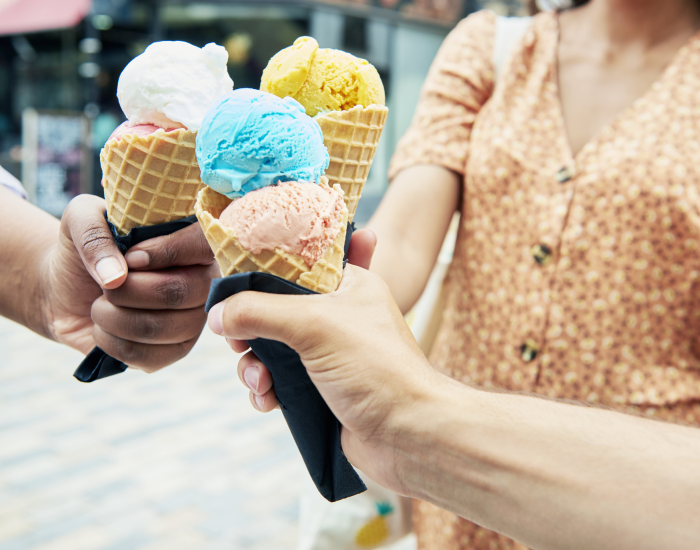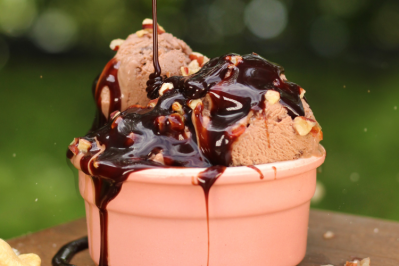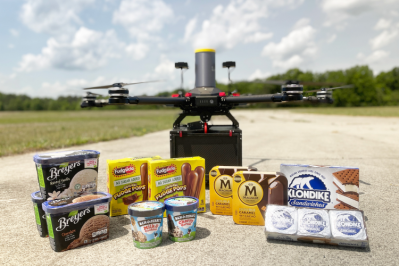Ice cream sector explores new delivery and storage innovations

Demand for close-to-home and straight-to-the-door delivery options remain in place. In addition, loudening calls for food and drink sectors to rethink ways to source, deliver and store products have now shone a spotlight on ice cream storage.
The simultaneous exploration of new ice cream delivery and storage ideas sees manufacturers take up the opportunity to experiment and research and develop novel ways to meet consumer needs.
Ice cream brands are looking at utilising unfamiliar spaces, broadening to new geographical territories and ice cream categories and finding proactive ways to tackle climate change to meet growing expectations for convenience, accessibility and sustainability.
Easier access to ice creams
The move to convenient and easy-to-access ice cream delivery has seen one brand partnership strive to utilise idle resources to reach a wider consumer base and offer the straight-to-you distribution of frozen foods.
Indian frozen food producer, ITC Master Chef, teamed up with Lotte brand-owned Havmor ice cream to develop its business model using the latter’s ice cream carts. While traditionally, consumers had to visit a grocery store or a kiosk, this initiative made frozen goods available at a nearby location with direct-to-home delivery services available upon request.
The ice cream delivery model taps into market intelligence agency Mintel’s research on consumer trends that indicate consumers expect products and services to be brought directly to them, wherever they are.
“The pandemic has amplified the need for close-to-home and straight-to-you options for home-bound consumers who experienced a reduction in out-of-home indulgences,” said Rushikesh Aravkar, Associate Director of Consumer Reports South APAC (India and Thailand) for Food and Drink, Mintel.
“This has increased the demand for faster delivery and easier access, which is a trend likely to continue due to the immense convenience it provides to consumers,” added Aravkar.
Making use of unused infrastructure
Attention now turns to whether brands around the world are exploring ice cream cart delivery options. “The ice cream cart delivery is a creative way to use existing infrastructure for one category to solve a problem in another category,” said Aravkar. “It was a good fit for this application,” commented Aravkar, in reference to the partnership between ITC Master Chef and Havmor.
The frozen foods category is still a new and emerging category in the Indian market and acceptance is growing among consumers. According to Mintel’s research, 32% of Indians claimed to have increased their consumption of frozen vegetarian snacks and 26% of frozen non-vegetarian snacks during the Covid-19 lockdown.
“Therefore, we can say that consumers are warming up to the concept of frozen foods,” shared Aravkar. However, to capitalise on this opportunity, Aravkar continued, frozen food brands have to overcome the logistical challenge of the limited number of retailers with freezers that hinders deeper penetration in the market. It becomes important for brands in this space to create a loyal consumer base by creating awareness and improving accessibility by reaching consumers at their doorstep.
“The ice cream cart delivery serves both purposes: awareness and accessibility,” detailed Aravkar. “This channel has hyperlocal penetration, it is familiar to consumers, comes with mobile freezers and helps in delivering new products to consumers without leaving the comforts of their homes, thereby enabling discovery and trials for this emerging category.”
A warmer way to store ice cream
British multinational consumer goods company, Unilever, is exploring another element of the ice cream business: storage. In May 2022, Unilever announced the launch of two pilot projects that would trial ice cream freezer units at a higher temperature to lower greenhouse gas emissions while maintaining quality and experience.
“These pilots will provide valuable information on how much energy we can save and how our ice cream products perform in warmer freezers to ensure we deliver the same great-tasting ice cream,” said Matt Close, President of Ice Cream at Unilever. “We’re actively seeking to collaborate with partners from across the ice cream and frozen food sectors to drive industry-wide change, so the collective positive impact is far greater,” added Close.
Improving energy efficiency and reducing greenhouse gas emissions
The brand is launching these two pilots with the aim of reducing energy use and greenhouse gas emissions by approximately 20-30% per freezer. Unilever wants to explore and understand the product performance of its ice cream and the energy consumption of freezers at the warmer -12°C temperature. The company’s ambition is to improve energy efficiency and reduce greenhouse gas emissions across the cold chain.
Unilever launched the first pilot in Germany in May 2022 and has a second pilot to follow in Indonesia in 2023. Following the completion of the first two pilots and if successful, the company states it will work to ‘warm up’ its last-mile freezer cabinets in a phased approach. It will start in markets where its last-mile freezer cabinet carbon footprint is highest, to achieve the maximum reductive impact on its carbon emissions.
It hopes these pilots will drive industry-wide change and is actively seeking to collaborate with partners from the ice cream and frozen food sectors to enable this change.
Influencing ice cream storage
Currently, the industry standard in many markets is a temperature of -18°C, Unilever shares. The company hopes to move the temperature of its retail sales freezers to -12°C to improve energy efficiency and reduce greenhouse gas emissions.
Unilever’s lab studies indicate that increasing the temperature of its freezer cabinets could reduce energy use and greenhouse gas emissions by approximately 20-30% per freezer. These pilots will provide the company with valuable information on how much energy it can save and how its ice cream products perform in real-life conditions.
Emissions from retail ice cream freezers account for 10% of Unilever’s value chain greenhouse gas footprint. In 2021, in Unilever’s Climate Transition Action Plan, it outlined its roadmap to reduce emissions, including reducing cabinet energy consumption through developing its main technical components (such as compressors), exploring programmes that will enable the freezers to be powered by renewable electricity and working towards ‘warming up’ the cold chain.
Achieving optimum quality and consumer experience
In exploring new storage conditions, Unilever sought to develop its new freezers while retaining the same quality and consumer experience. Product quality is our number one priority, the brand relays. So, even upon increasing the temperature of its last-mile sales freezers, Unilever wants its consumers to have the same great experience when eating their ice cream.
For the Germany pilot, Unilever will be testing its ice creams without reformulation as during its R&D laboratory tests the researchers found it to be naturally resilient at a higher temperature.
However, for the Indonesia pilot, the vast majority of the Seru portfolio will be reformulated because the original products were found too soft at -12°C in the company’s R&D assessments. Reformulating the Seru portfolio ensures the products stay stable and offer an uncompromised consumer experience, Unilever relayed.








